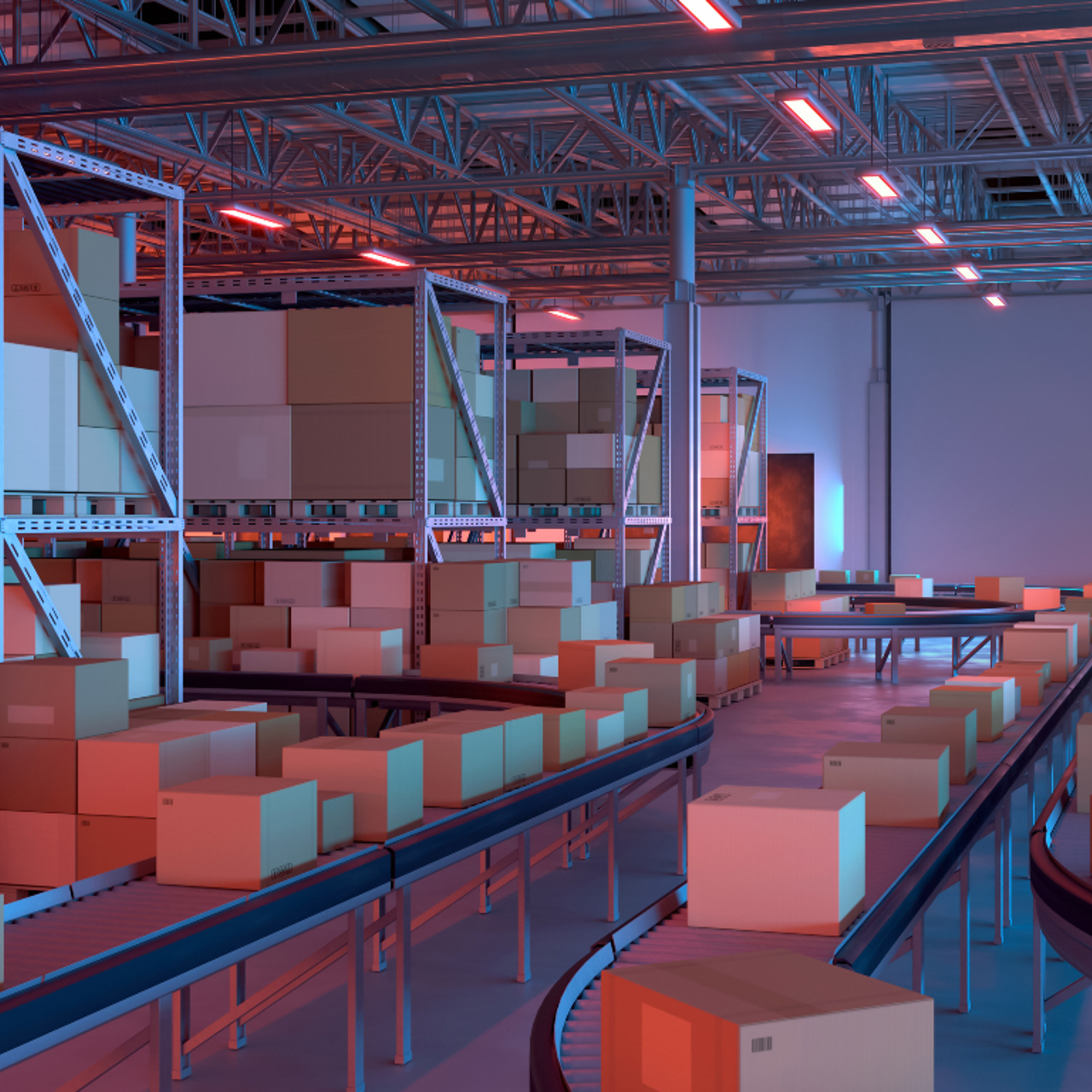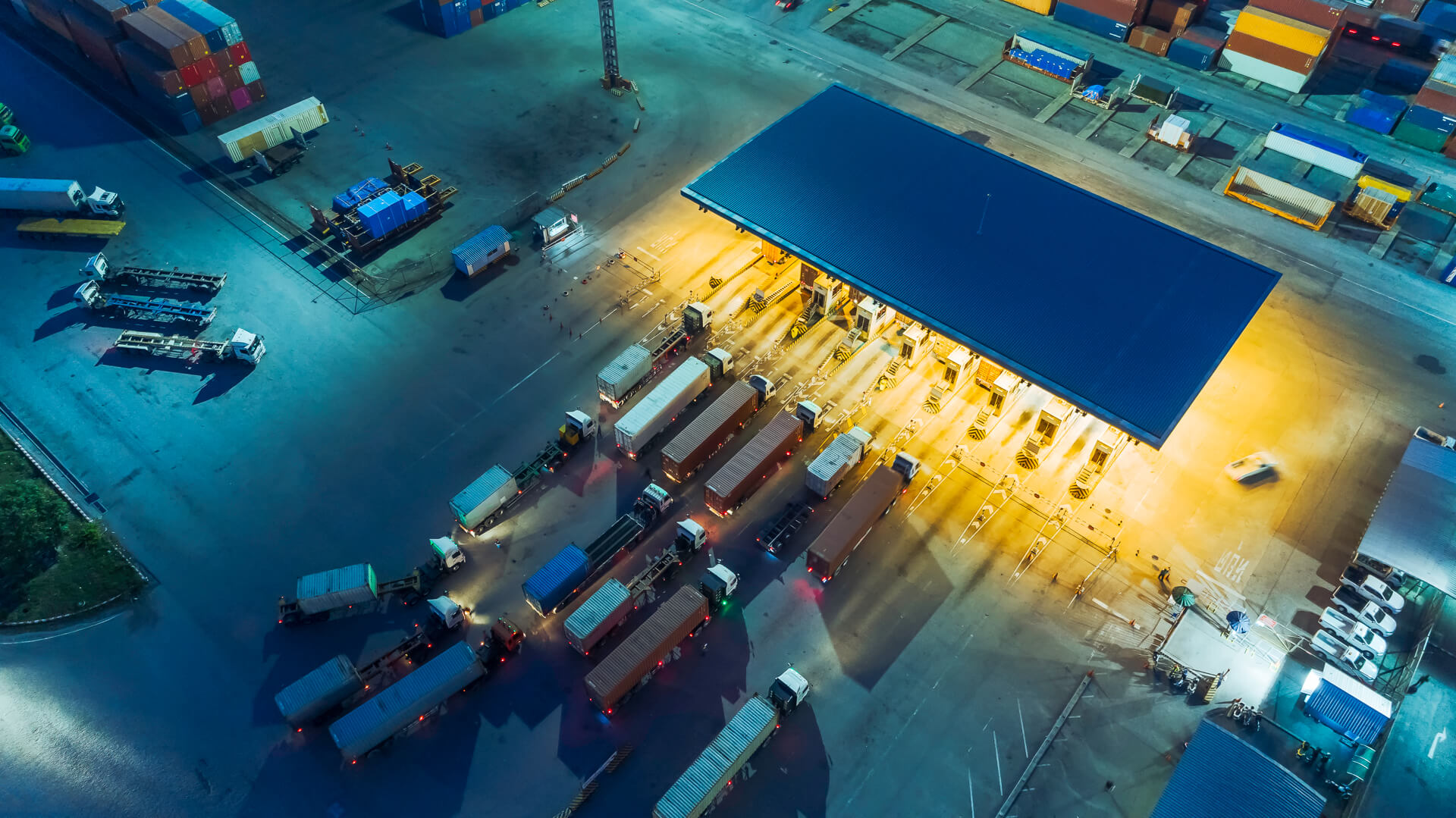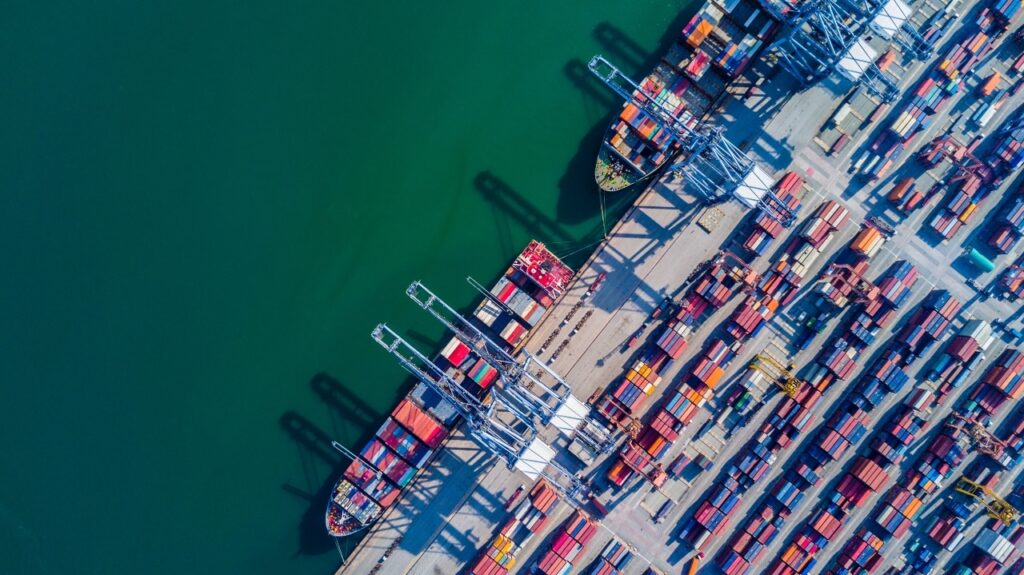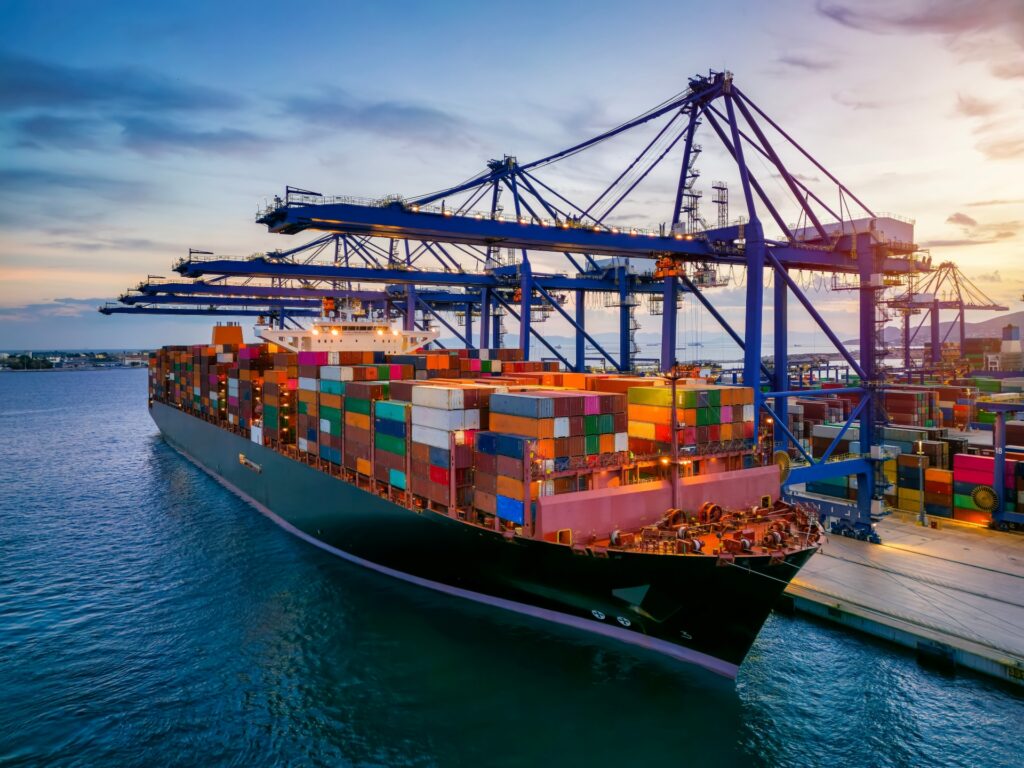The views and opinions expressed by the interviewee are solely those of the interviewee and do not reflect the views, positions, or policies of any organisation, past or present, with which the interviewee has been affiliated.
Global trade is as much about relationships as it is about regulations. In Asia Pacific – a region defined by its diversity and pace of change – compliance is not just a requirement, but a reflection of how organisations lead, collaborate, and build trust across borders.
As APAC Trade Compliance Leader at Veolia, Gimun Solomon Yang oversees compliance operations across countries, industries, and regulatory systems. His role is to keep trade flowing smoothly while ensuring every transaction meets the highest standards of integrity and transparency.
From embedding a ‘compliance DNA’ into daily operations to leveraging digital tools, he works across finance, logistics, and commercial functions to make compliance both effective and enabling.
Whether it is adapting to overnight regulatory changes, building capability across regional teams, or fostering collaboration with customs brokers and regulators, his goal remains constant: to make compliance a culture, not a constraint.
In this interview, Gimun shares what it means to manage compliance at scale, how technology and people work hand in hand, and what future-ready trade leadership looks like in a changing global landscape.
Inside the role: Leading trade compliance across APAC
What does it mean to manage compliance at scale across diverse trade environments?
As the APAC Trade Compliance Leader at Veolia, what does a typical day look like? How do you measure success across such a large and diverse region?
Every day is different in compliance, it’s never the same twice. Regulations can change overnight.
In some countries, we might get three- or six-months’ notice about an upcoming change, but in others, we could be told today that something must change tomorrow. It’s a very dynamic environment, and navigating these changes is at the core of what I do.
My day usually starts with checking emails and reviewing newsletters specific to my function that I’m subscribed to. Most of the newsletters cover complex financial topics, which aren’t directly relevant since I don’t handle finance compliance. But if there’s anything related to international trade that could impact our operations, I will flag it. I will highlight those key points and share them with other regions or countries that may be affected, as well as with other functions in the business.
After that, much of my time is spent responding to questions or queries, reviewing procedures and contracts, attending meetings, preparing internal reports, reviewing audit reports, and reviewing projects. Cross-border movements in particular need close attention, because they involve compliance in two countries rather than just one. Domestic compliance still matters, of course, but international trade brings that extra layer of complexity.
Beyond compliance checks, I work closely with different functions across the organisation; finance, tax, sales, operations, logistics, and even commercial teams. For example, when commercial operations are calculating costs, we work together to ensure compliance-related costs are properly accounted for.
Ultimately, my role isn’t just about avoiding fines. It’s about fostering a culture of compliance throughout the organisation and ensuring that our business operations are conducted in accordance with all applicable regulations and requirements. By proactively managing this, we safeguard the company’s reputation, maintain trust with our partners and customers, and establish a solid foundation for sustainable and responsible growth in both domestic and international markets.
Every day, I try to embed a culture of compliance into the organisation’s DNA; making sure it’s part of how we operate, not just something we react to when problems arise.
When you talk about embedding the ‘DNA of trade compliance’, what exactly do you mean? How do you know when someone has truly understood it and applies it in their daily work?
I always tell my colleagues…
There are no wrong or stupid questions in trade compliance. That’s the starting point.
When we first explain requirements – for instance, for a specific type of trade transaction – we must clearly outline the necessary documentation, checks, and procedures. Initially, people typically follow the instructions step by step, almost mechanically. But genuine progress becomes evident the second time around, when they return and ask, ‘I’ve handled it this way, does this approach look correct?’
This is when you can see that real understanding is taking root.
It goes even further when they begin spotting issues themselves. For example, if a colleague receives a shipment from another country or region and something doesn’t look right, and they come to me to check, it’s a clear sign. It shows that compliance is no longer just a task I push onto them; it’s something they’ve internalised.
As regional leaders, we can’t possibly review every single transaction. So, when colleagues can sense when something might be wrong and proactively raise it, that’s when I know the DNA of compliance has taken root in our daily operations.
What do you see as the core elements of a strong trade compliance framework in today’s global trade environment?
From my experience, there are three core elements.
First is clarity. You need to be clear about expectations – what people must do, and what the consequences are if they don’t. It’s not enough to simply say, “You have to do this.” When I draft SOPs, I make sure they reference the specific regulations behind them, so colleagues understand it’s not just a ‘good-to-have’, it’s a must-have. Clear expectations are critical.
Second is agility. Regulations today are highly dynamic. They can change overnight, like during recent tariff trade wars, when rules shifted literally from one day to the next.
Trade compliance must be embedded within the entire supply chain ecosystem, because regulatory changes don’t just affect compliance procedures. They fundamentally impact how you design your supply chain, manage vendor relationships, and determine which business partnerships remain viable. When regulations shift, the ripple effects extend across all operational dimensions.
Agility is critical to managing that.
Third, and most important, is people. You can have the clearest processes and the most agile systems, but if people aren’t trained and engaged, it won’t work. Machines and systems can help, but if the people don’t enter the right data or follow the process, compliance breaks down.
People are at the heart of trade compliance. They’re the ones who will notice when something doesn’t look right, raise questions, and consult when necessary.
This is how we truly embed compliance DNA – when people internalize that mindset and apply it consistently across every aspect of their daily work.
How do you ensure your team stays updated and ready to respond to challenges like tariff changes or shifting regulations?
Training is always the first step, but it’s not a one-off exercise.
To me, training means guiding people to understand not just what the rules are, but why they exist and why things must be done a certain way.
Whenever I conduct training sessions on trade compliance, I start with the basics: what trade compliance means and the key elements behind it. Over the years, I’ve always emphasised what I call the eight pillars of trade compliance:
[1] Valuation
[2] Incoterms®
[3] HS Codes
[4] Country of Origin
[5] Sanctions
[6] Licences
[7] Trade Controls
[8] Customs clearance processes
Every international business operation touches these areas in some way. Different functions may own different pillars – for example, valuation may sit with one team while licensing sits with another – but they must all work together. That collaboration ensures trade compliance is built into the organisation holistically.
When these eight pillars are properly in place, we build resilience. Not just technical compliance, but the ability to withstand disputes or regulatory shocks in the future.
You’ve worked across chemicals, agribusiness, and industrial sectors. How do industry-specific needs shape your compliance strategy?
There’s no ‘one-size-fits-all’ in trade compliance. Each industry has its own regulations and requirements we must adapt to.
Take the chemical industry, for example. It’s one of the most heavily regulated sectors in the world. Chemicals can be dual-use and highly sensitive, so regulations and licensing requirements are extensive. I always had to stay on top of constant changes and talk to people across functions, because…
…compliance isn’t a one-person role, you need collaboration. And there’s no single source of truth; you must verify across multiple sources and jurisdictions.
When I worked in chemicals, I often found myself explaining to teams: “If you want to ship this product to that country, here are the regulations you must follow.”
In agribusiness, time is the critical factor. Crops and plants can only be grown and shipped during specific seasons, so missing a compliance step can mean losing an entire opportunity. That means licences and permits need to be prepared months in advance.
And since chemicals are also used in agriculture, dangerous goods (DG) must be declared properly. Timing and preparation are key in this sector.
In my current role, it’s more of a mix: technology combined with chemicals. Trade control is particularly important, though not always directly under my scope. We work closely with trade control functions because they’re tied to Incoterms® and supply chain responsibilities.
For instance, when purchasing from a foreign country, we must ensure that the vendor acts as the exporter of record. They carry the responsibility for licences and export requirements. We can support and assist, but we cannot take on obligations that belong to the exporter.
Across all these industries, I try to make compliance a business enabler. It’s never about saying, ‘no, you can’t do this’. Instead, it’s about saying, ‘yes, you can, but under these conditions.’
Modernising compliance: Strategy, systems, and skills
How has trade compliance evolved, and how should leaders adapt?
How have tools like SAP-GTS and automated systems changed how you manage regulatory risk and compliance?
Automated systems have transformed the way trade compliance works.
At the backend, these systems allow us to perform checks in real time – or, if not real time, at least at set intervals – which is critical. If the system is in real time, it can flag issues that need to be checked before anything happens. That ability to identify risks upfront makes a huge difference.
For example, SAP-GTS is excellent for managing licences and for monitoring HS codes. In global trade, one product code can branch into multiple subcodes, and SAP-GTS helps monitor and manage that complexity effectively. It’s a powerful tool for ensuring consistency and reducing errors in classification and licensing.
But systems alone are not enough. No system can replace the compliance function.
Compliance is not only about automated checks, but also about people, decisions, and judgment. Technology supports us, but it cannot fully take over.
We’re also starting to see the use of AI in compliance. I use AI tools myself to quickly find and share information.
But we always must remember, AI can make mistakes; we must verify the information. It’s a tool to help us work faster and execute tasks more efficiently, but not something we can depend on 100%.
You’ve implemented customs technology and trained regional teams – what’s your approach to building lasting compliance capability within organisations?
To me, lasting compliance capability means creating knowledge that stays with people, even if they leave the organisation. That’s why I always go back to embedding compliance DNA in day-to-day operations.
When I provide training, I don’t just tell people, “Do this, this, and this”. Instead, I explain why it must be done that way, and what the consequences are if it’s not followed. When people understand the reasoning, it becomes second nature. “If I don’t do this, then that will happen – so I must not forget it.” That’s when compliance knowledge really sticks.
Role-based training is also essential. Training must be tailored so that each role understands their specific responsibilities and checks. That way, wherever they go in the future, the principles will carry with them.
Another part of my approach is cultural. When something goes wrong, I don’t point fingers.
To me, it’s not about who is wrong, it’s about what caused this.
Often, mistakes happen because of misunderstanding, not negligence. By addressing the root cause and creating a safe space for people to ask questions, we make compliance part of everyday decision-making.
Ultimately, compliance isn’t about perfection. It’s about building people’s confidence to act, consult when they’re unsure, and carry those principles with them wherever they work.
Global trade dynamics: From Incoterms® to free trade agreements
What are the practical tools that make cross-border trade work?
You’re certified in Incoterms® 2020 and have extensive FTA (Free Trade Agreements) experience. How do these frameworks support both cost efficiency and compliance?
FTAs and Incoterms® work hand in hand. If you don’t fully understand Incoterms®, it’s impossible to calculate the value correctly for FTA requirements.
In every FTA, the legal text includes rules of origin; these can be based on tariff shifts, processing requirements, or value content. Almost all agreements include variation rules based on the local or regional value content. And that valuation is tied to the Incoterms® used.
If you don’t know exactly which costs must be factored into a particular Incoterms® rule required by the FTA, then you can’t accurately calculate whether you meet the required percentage of local content. That means you risk either losing out on preferential tariffs (if you under-claim) or falling out of compliance (if you over-claim).
So for me, the two frameworks always operate together: FTAs provide the legal requirements, while Incoterms® provide the cost and responsibility structure that makes those requirements measurable and achievable.

Incoterms® 2020 Certificate
Can you share a specific example where applying the right FTA or Incoterms® clause helped solve a business challenge or unlock value?
When it comes to FTAs, we must always select the one that fits our supply chain structure. If your raw material sources are constantly changing, then using an FTA based on value content won’t work, because the calculation is disrupted every time.
In that case, you must choose an agreement where compliance can be met through processing rules. For example, if a chemical reaction qualifies under the processing criteria of the FTA, then that’s the agreement to use.
Selecting the right FTA can deliver real business value. As a buyer, if I know two countries have an active FTA, I always insist on the preferential certificate because those duty savings go straight to the bottom line. Lower duties mean lower cost of goods sold, which directly improves competitiveness.
The same principle applies to Incoterms®. You must select the correct Incoterm to align with FTA requirements. For instance, if you sell under CIF but the FTA calculation requires FOB or EXW, it becomes difficult to calculate correctly and maintain proper records.
Record-keeping is critical to proving compliance. That’s why I always say: choosing the right Incoterms® rule is not just a technicality, it’s fundamental to ensuring compliance and unlocking the benefits of FTAs.

Free Trade Agreement Certificate (FTAC)
What’s a common mistake companies make when using Incoterms®, and how can they avoid it?
One of the most common mistakes I see is people using Incoterms® without really understanding what they mean. For example, someone might say, “Oh, just use CIF,” without knowing the full implications of that term. That’s very risky.
Many people assume Incoterms® can be used anywhere, but that’s not true. Each Incoterms® rule must match the mode of transport and your logistical capabilities.
If you can’t provide transport or proof of delivery to the foreign destination, you shouldn’t agree on a D-term, because it can cause serious operational problems.
Another common misunderstanding is how tax authorities use Incoterms® today. In some countries, tax authorities assess VAT and permanent establishment (PE) risk based on the chosen Incoterms® rule. That’s why I always advise:
Before deciding on an Incoterms® rule, consult both your legal and tax teams.
For example, if you sell under EXW and use a third-party invoicing structure – what we call triangular sales – some countries may treat that export as a local sale. That triggers VAT registration requirements and can even create a permanent establishment risk. Often, sellers choose EXW just to make things easier for themselves, but they don’t realise the tax and compliance consequences.
In my opinion, the most critical Incoterms® rule to watch out for is DDP (Delivered Duty Paid). Many people assume they can use DDP freely, but that’s not always true.
DDP should only be used when it’s a local sale within your own corporate group; for example, when your subsidiary acts as the importer of record. In that case, DDP works fine as a domestic transaction.
However, if you use DDP in an international transaction and pay duties in a foreign country, it effectively makes you the importer. That means you’re carrying local tax obligations and may again face permanent establishment risk. Once you pay duties in a foreign country, it becomes a domestic business transaction.
So, my advice is simple: always be cautious with DDP and understand the full implications before using it.
Related reading on DDP:
- National regulatory barriers to the Incoterms® 2020 rules (Updated in January 2025)
Could you share about how the Incoterms® 2020 Certificate has helped you in your line of work?
The Incoterms® 2020 Certificate has really helped me in a few key ways.
First, it gave me a much deeper understanding of how the rules work in practice. The certification helped me understand the details of each Incoterms® – like how different Incoterms® affect customs valuation, or why certain rules don’t work with specific modes of transport. That knowledge has been useful when colleagues ask me which rule they should use for a particular shipment.
Second, it’s made conversations easier. When I’m explaining to someone why we can’t use a certain Incoterms® rule or why we need to change something in a contract, having the certification behind me helps. People take it more seriously. It’s not just my opinion; it’s based on proper training and understanding.
And third, it’s helped me spot problems before they become bigger issues. I’ve noticed cases where the Incoterms® on the invoice didn’t match what was happening in the supply chain, or where teams were using the wrong Incoterms® for duty calculations. Because I understand the rules better now, I can catch those things early and work with the teams to fix them.
Overall, it’s been a practical qualification that’s made me better at my job and more confident when dealing with trade compliance issues, especially for international trade.
Cross-functional leadership and operational excellence
Why is effective trade leadership about more than just trade compliance?
What does effective collaboration look like between compliance leaders and external partners like customs brokers, 3PLs, and regulators? What makes those relationships successful?
For me, success starts with recognising that our vendors are not just service providers; they’re an extension of our function. They’re the ones operating on the front line, so we must work as one team.
Open communication is essential. We regularly discuss how operations should run, and having a clear SOP (Standard Operating Procedure) is critical. When vendors come on board, we explain our organisation’s compliance requirements: what must be done, what cannot be done, and when to seek clarification. And it works both ways.
If you don’t know, come to us and ask. If we don’t know, we’ll come to you. That two-way communication is what makes the partnership work.
It’s the same with regulators. Once communication channels are established, it becomes easier to exchange feedback. Sometimes I’ll tell regulators, “This control doesn’t seem to cover this type of goods, perhaps it should,” and they’ll take that into consideration. That openness builds mutual respect.
Ultimately, open communication and emotional intelligence (EQ) are critical. Compliance is not one-way; it’s about understanding others’ perspectives and building trust.
Outlook: What’s next for trade compliance professionals?
As the global trade landscape shifts, how will the compliance function evolve?
How are new trends and developments (e.g. digital customs processes, ESG regulations, geopolitical trade shifts) shaping your work right now?
These developments are widening the scope of trade compliance. There’s so much more we need to look at now.
Take customs digitalisation, for example.
It’s no longer just about submitting documents; it’s about ensuring data quality. Every piece of information entered into the customs system must be keyed in and cleaned properly. In my current role, I receive import data from our brokers every month and review it to make sure all declarations are accurate.
What you learn today might not be applicable tomorrow.
Regulations, technologies, and geopolitical situations are evolving so quickly that continuous learning is essential.
That’s why I make it a point to stay connected to updates through newsletters, trade publications, and any new regulatory materials I can find. When time allows, I also read more in-depth articles and books about trade compliance to understand how these shifts impact our work.
In short, digitalisation and global changes have made the role of trade compliance broader than ever, and they’ve also made learning a lifelong part of the job.
Any advice for those looking to grow into a regional trade compliance leadership role like yours? What skills were most critical to your own growth?
The first thing I always tell people is to stay updated with regulations. That’s number one. But don’t stop there; keep equipping yourself with new knowledge, because regulations and global trade environments change all the time.
Understanding Incoterms® is also essential. If you’re involved in international trade, you must know what each Incoterms® covers, how to apply it in case of disputes, and what other regulations might impact your supply chain operations.
Every organisation has a different type of supply chain, so you need to understand how it operates before you can see where compliance fits in.
And, finally, to grow into a leadership role, technical expertise alone isn’t enough. In trade compliance today, we don’t just need experts, we need leaders.
Leadership means talking to people, understanding their needs, and helping them apply compliance principles in their daily work.
Emotional intelligence (EQ) is one of the most critical factors for progressing in this field.

Incoterms® 2020 Certificate
Related reading:




